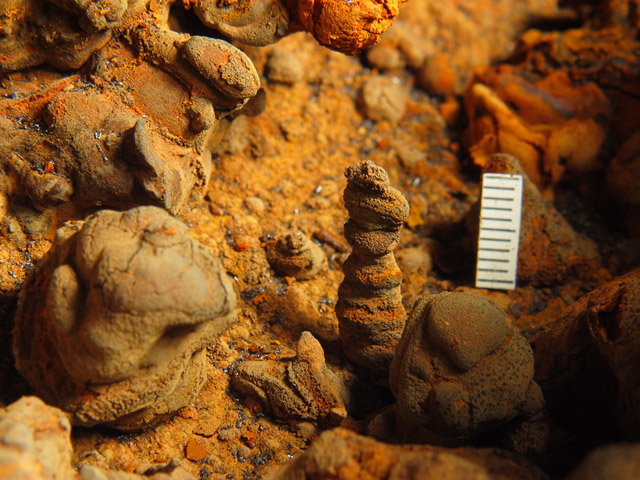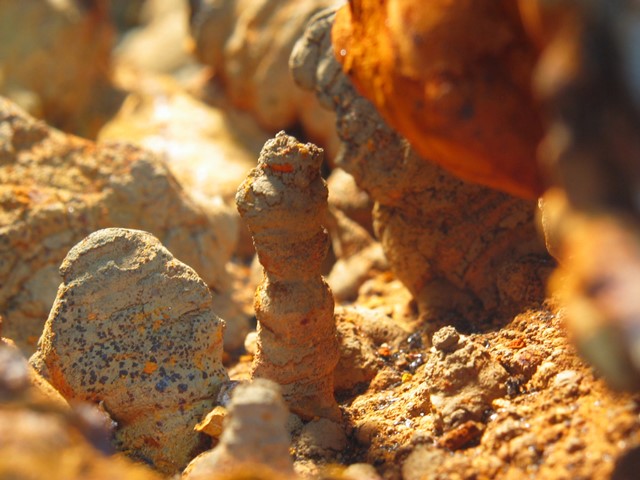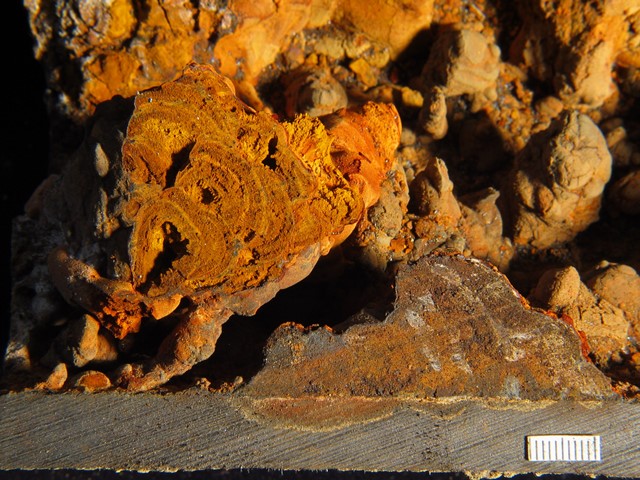Corrosion of iron water mains is generally non-uniform. Scales develop not as a coating on the pipe interior, but as discrete mounds, called tubercles, that grow relatively rapidly. They can seriously occlude pipe volume.
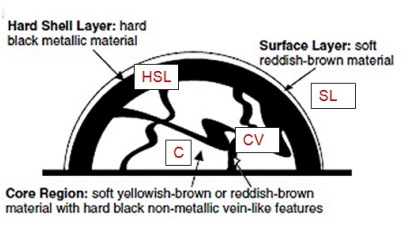 |
Schematic view of internal structure of tubercle in cast iron water main (from Gerke et al 2008) |
|---|---|
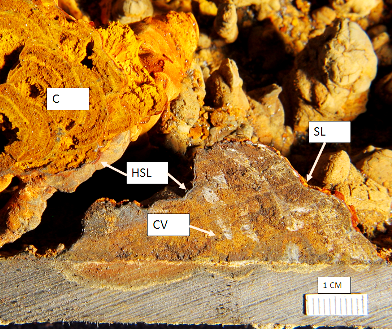 |
Tubercles iron scale utility 2a water main |
Chemistry of multiple tubercles from one pipe - Utility 2 (Gerke et al. 2008) |
|||||||||||
Ca |
Fe |
Mn |
P |
Cr |
Cu |
Pb |
Sr |
V |
Zn |
Sr/Ca |
|
% |
% |
% |
% |
mg/kg |
mg/kg |
mg/kg |
mg/kg |
mg/kg |
mg/kg |
||
FeOOH-rich textures |
|||||||||||
Surface (SL) |
3.90 |
50.2 |
0.11 |
0.09 |
26 |
13 |
25 |
38 |
11.9 |
13 |
9.7 |
Core (C) |
0.56 |
59.2 |
0.04 |
0.17 |
27 |
7 |
96 |
9 |
3.2 |
8 |
13.4 |
avg |
2.23 |
54.7 |
0.07 |
0.13 |
26 |
10 |
61 |
23 |
7.6 |
11 |
11.5 |
Fe3O4-rich textures |
|||||||||||
Shell (HSL) |
4.82 |
50.8 |
0.11 |
0.05 |
19 |
6 |
11 |
30 |
8.4 |
9 |
8.0 |
Veins (CV) |
0.81 |
56.6 |
0.04 |
0.12 |
28 |
6 |
159 |
7 |
2.3 |
7 |
10.2 |
avg |
2.82 |
53.7 |
0.07 |
0.08 |
23 |
6 |
85 |
19 |
5.4 |
8 |
9.1 |
overall avg |
2.52 |
54.2 |
0.07 |
0.11 |
25 |
8 |
73 |
21 |
6.5 |
9 |
10.3 |
Gerke TL, Maynard JB, Schock MR, Lytle DA. (2008) Physio-chemical characterization of five iron tubercles from a single drinking water Distribution System: possible new insights on their formation and growth. Corrosion Science 50:2030–2039.
See Iron Mineralogy page for more information on FeOOH and Fe3O4
Examples of iron corrosion scales:utility 2
Photos by Mike DeSantis - all rights reserved. Click on an image for full size file
02_PF_02A_slide7
02_PF_02A_slide_3 (same magnification as previous)
02_PF_02A_slide_1
